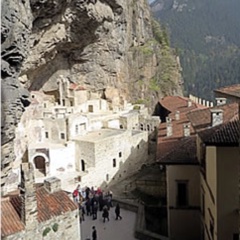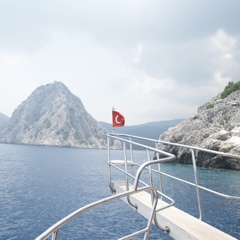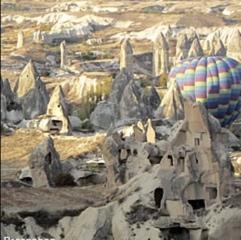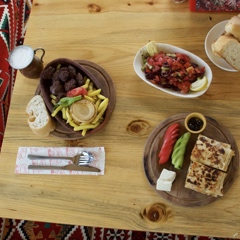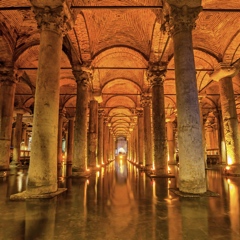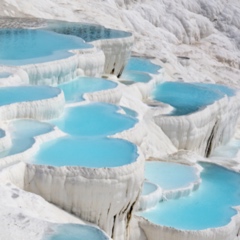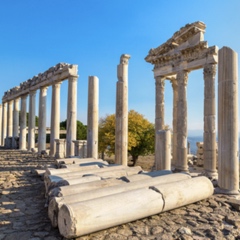Named after Selçuk Bey, the Seljuk Turks established an enlightened, tolerant government in Central Anatolia that fostered a great culture in the 11th century and lasted until the mid-13th century. They played a key role in shaping the Islamic world.
Origin of Selçuk Turks and Their Rising
The Seljuks (Selçuklular) were a Turkish tribe from Central Asia. They poured into Persia(1037) and established their first powerful state, called the Empire of the Great Seljuks by historians.
Fighting the Ghaznavids, the Seljuks initially appeared on the eastern borders of the Islamic world. They took Khorasan and defeated the Ghaznavids at the Battle of Dandanakan in 1040. The Seljuks were able to gain influence in the Islamic world as a result of their victory.
The Seljuk's governance was famous for its small ruling class, primarily overseeing a Greek-speaking Anatolian Christian population with a significant Jewish minority. This diversity underlined their tolerant administration.
Biggest Victory of Selçuk Turks
They captured Baghdad in 1055, and a relatively small contingent of warriors—about 5,000 by some estimates—moved into eastern Anatolia. In 1071, Under the leadership of the great emperor Alp Arslan, the Seljuk force engaged the armies of the Byzantine emperor at Manzikert(Malazgirt) north of Lake Van, defeated them decisively, and captured Emperor Romanus IV Diogenes.
With no Byzantine force to stop them, the Seljuk Turks flooded into Anatolia, taking control of most of Eastern and Central Anatolia. They established their capital at Konya around 1150 and ruled what would be known as the Seljuk Sultanate of Rum [ROOM, Rome]. Alanya, Erzurum and Sivas were other important Seljuk cities.
The Place of Culture and Art
Seljuk's rule was tolerant of race, religion, and gender. Churches and synagogues flourished, and some of the finest examples of Seljuk architecture, including huge mosques, theological seminaries, hospitals and caravanserais, were built on the orders of empresses and princesses.
Muslim mystic, theologian, and poet Jelaleddin Rumi (1207-1273) is the sultanate's most famous and enduring figure. Son of a noted theologian, Rumi's preaching and spiritual leadership soon earned him a large following. His followers called Rumi Mevlana ("Our Guide"). After his death his son Sultan Veled organized his followers into the Sufi order of Mevlevi("Whirling") Dervishes. During this time, Islamic scholar and philosopher Ghazali also pursued their education under the protection of the Seljuks. The mathematician and poet Omar Khayyam flourished under the Great Seljuks.
Fall of the Selçuk Turks
The borders of the Seljuk Sultanate were always in flux, with the remnants of the Byzantine Empire to the west, the Arabs to the south, and the Mongols encroaching from the east.
Few of the many capable sultans died natural deaths; most died in battle or by treachery.
Seljuk culture in Rum was at its height in the mid-1200s, just as the Mongols overran West Asia and ravaged Anatolia. Most of the finest examples of Seljuk architecture, such as the fine caravanserais and the wonderfulmosques and medreses in Konya, date from the mid-1200s.
The art of the successor Mongol Ilkanids and of the Beyliks (principalities) that sprang up in Anatolia after the collapse of Mongol rule owe much to Seljuk inspiration.
Among the upstart warlord principalities of the 1300s was one based near Nicaea (Iznik) on the Byzantine frontier and led by a chieftain named Osman. It grew rapidly in size and strength and was soon on its way to becoming the vast Ottoman Empire.
The Significant Selçuk Sites and Structures to visit in Turkish
Selçuks has left many important ancient structures and sites across the land of Turkey. Today, many of these sites have been excavated and renovated for visitors to sightsee. Here are some of the most popular Seljuk sites in Turkey:
Alâeddin Camii (Mosque), Konya
As one of the greatest architectural masterpieces, this mosque is at the capital of the Seljuk Sultanate of Rum. It was built on the orders of its eponymist, Sultan Alâeddin Keykubad I, in 1220. It is a popular tourist destination and a respected historical site.
Sultanhanı Kervansarayı (Caravanserai), Aksaray
Located on the Aksaray, it's one of the largest and best-preserved Seljuk caravanserais. The caravanserai is not just a historical monument but a glimpse into the past, which shows the rich cultural heritage of the region.
Ince Minareli Medrese, Konya
In its time, this historical Islamic school was famous for its intricately decorated minaret. Its structure was an excellent example of Seljuk architecture and is now used as a museum of wooden artifacts and stone carvings.
Gök Medrese (Theological School), Sivas
It's a classic example of Seljuk architecture. Its front line is masterfully decorated with blue tiles. In Islamic art and architecture blue holds special significance because it represents the sky and heaven. Therefore, this structure is commonly known as "Gök," (sky or blue in Turkish).
The Selçuk Turks continue to intrigue and have an impact on modern society because of their rich cultural heritage and varied historical experiences. Their impact on education, architecture, culture, and food is evidence of their important influence on the medieval world. They serve as a constant reminder of the lasting value of invention and cultural exchange.
-by Tom Brosnahan
Read More:



